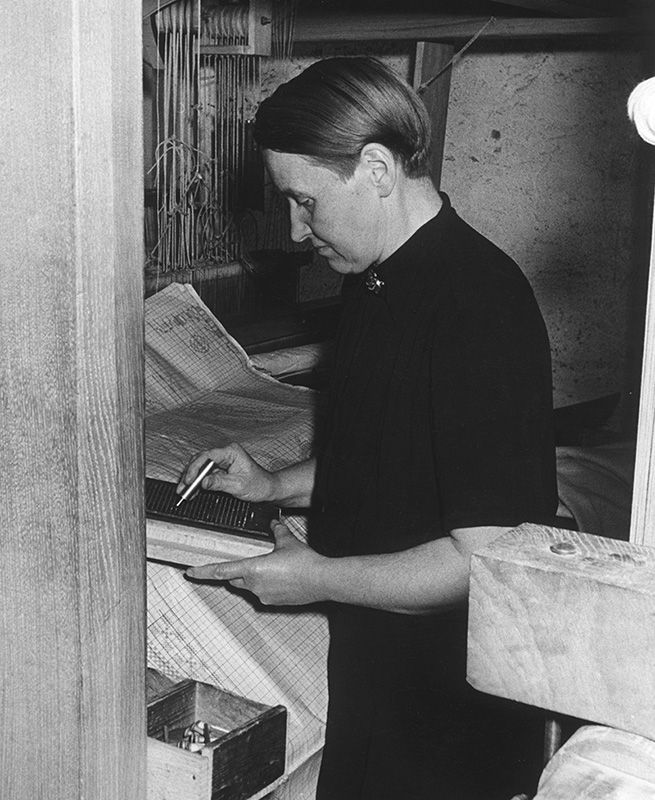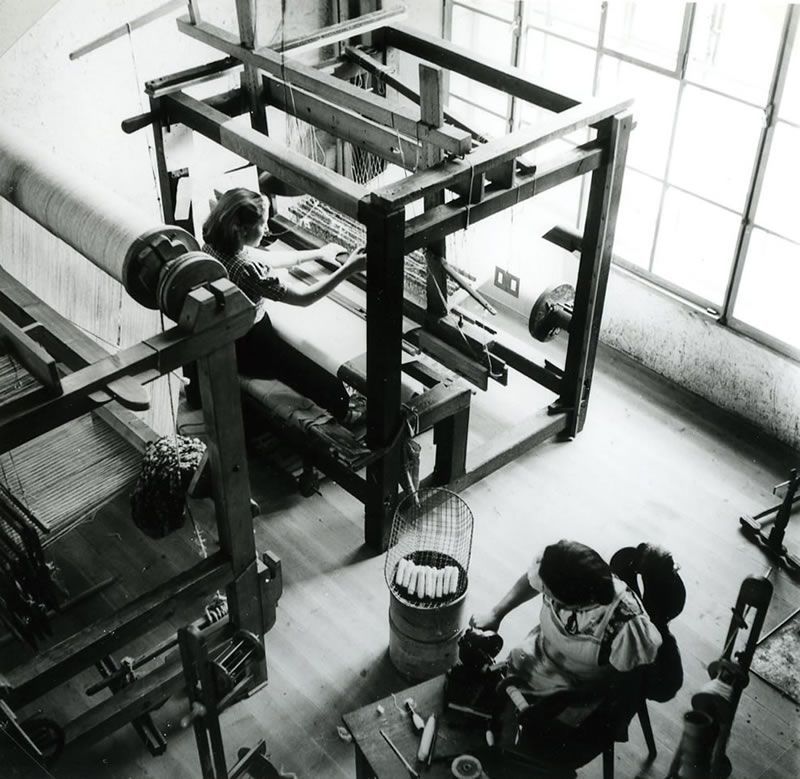
First a student and then the wife of Julius Bissier, Lisbeth goes on to develop an independent career in hand weaving, distinguishing herself for the intrinsic quality of her products, made in damasked silk and brocade - on the basis of old techniques that she retrieved - and awarded with exhibitions, museum acquisitions and recognition. Lisbeth also excels for her entrepreneurial skills, creating her own hand-weaving business, with adjacent spinning mill - where the threads are hand-spun - and dyeworks - where natural colours are used. At the death of her husband, Lisbeth Bissier sets up the Bissier Archive and devotes herself to the first cataloguing of the artist's works, conserving both his oeuvre and his memory.
Lisbeth Hofschneider is born.
Is a painting student of Julius Heinrich Bissier.
Marries Julius Bissier.
Designs carpets. Her daughter Dorothée is born.
Her son Uli is born.
Studies in the Textile and Fashion School in Berlin, thanks to financial support from the wife of the psychiatrist Hans Prinzhorn.
Self-taught, she begins to weave; she then sets up her own weaving workshop.
Moves to Hagnau am Bodensee, where she opens a textile factory that she enlarges with a spinning mill and a dyeworks for wool (where she uses colours extracted from plants and minerals).
She produces small tapestries and wall carpets (sometimes to designs by Julius Bissier) and successfully devotes herself to experimenting with traditional weaving techniques (damasked silk) on modern models.
Receives the Hessian State Award
Receives the Baden-Württemberg State Award.

The textile factory is closed.
Moves to Ascona, on Lake Maggiore.
Devotes herself almost entirely to curating the work of her husband, Julius Bissier